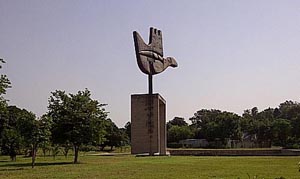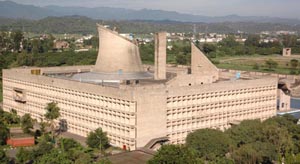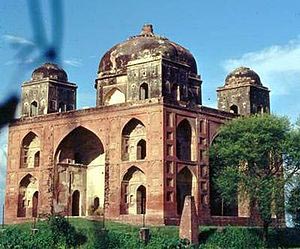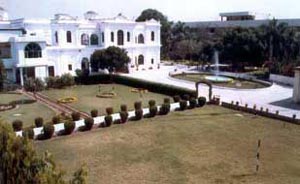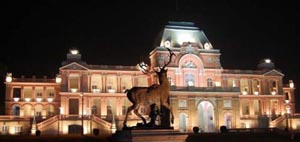Punjab Monuments - Famous Historical Places, Forts & Palaces
List of names of Famous Historical Forts / Palaces / Places of Punjab State
Here you can find list of names and information on historical forts / palaces/ places / monuments in Punjab, India. These famous monuments of Punjab state are most visited and most sought after best tourist places. You can also find images of Punjab monuments / places / forts / palaces.
Chandigarh Monuments, Punjab »
The open hand monument has a rich historical significance associated with it. The establishment of the monument has quite an important purpose owing to which it is considered as a major structure in Chandigarh over the years. The designer of the monument was intended to establish a place where people can come together and talks about different issues and problems in an around the city. The monument which is located specifically in sector 1 Capitol complex, it is believed to be built after India got independence i.e. 1947.
It is known that Chandigarh is a planned city that was built after the independence of India. The city along with the capitol complex was designed by the famous French architect Le Corbusier. Notably, the monument was built in the year 1962. It was the part of a 13 guide project that was allotted to Le Corbusier. The monument serve as a secretariat assembly for both the places of Haryana and Chandigarh collectively. Its use was started in the year 1966 as a Legislative assembly for the state of Punjab and Haryana.
Fatehgarh Sahib Monuments, Punjab »
The Rauza Sharif is a Dargah that is located in Sirhind-Bassi Pathana road in district of Fatehgarh Sahib in the Indian state of Punjab. The Dargah is well recognised by the Shaikh Ahmad Faruqi Sirhindi also known as Mujaddid, Alf-Isfani on whose name it is established. It is located quite near to Gurdwara Fatehgarh Sahib.
Kapurthala Monuments, Punjab »
Historical records suggest that the palace was made under the reign of Kanwar Bikrama singh. The palace was started building in the early years of the 18th century and complete specifically in the year 1862. It is one of the most well preserved palaces in Punjab and its beauty has remained intact over the years. The palace is built in a area of 300 acres is a mid-sized structure which is situate 36km away from Jalandhar.
Historical reports suggests that the monument was served as the residence of the maharaja of Kapurthala i.e. Jagatjit Singh. The man was one of the driving forces that established Kapurthala as what it is in the present day scenario. Located at a distance of 3 km from Kapurthala, the monument was primarily built during the year 1908. It depicts the royal lifestyle of the Sikh maharajas which can also be understood from the artefacts present.
- Andaman Nicobar Monuments
- Andhra Pradesh Monuments
- Assam Monuments
- Bihar Monuments
- Chhattisgarh Monuments
- New Delhi Monuments
- Goa Monuments
- Gujarat Monuments
- Haryana Monuments
- Himachal Pradesh Monuments
- Jammu and Kashmir Monuments
- Karnataka Monuments
- Kerala Monuments
- Madhya Pradesh Monuments
- Maharashtra Monuments
- Odisha Monuments
- Punjab Monuments
- Rajasthan Monuments
- Tamil Nadu Monuments
- Telangana Monuments
- Uttar Pradesh Monuments
- West Bengal Monuments
